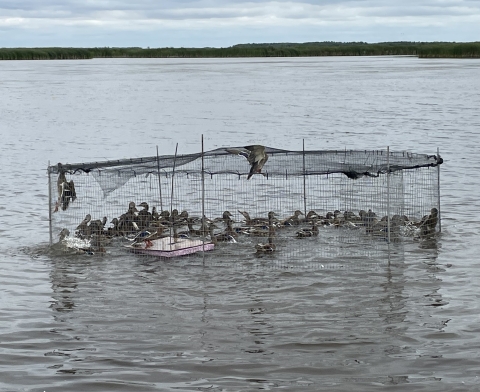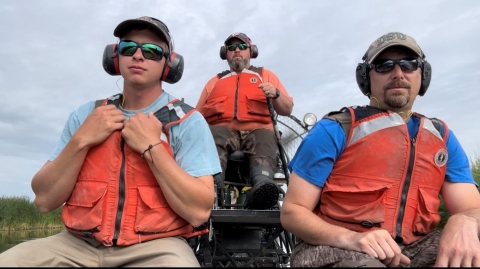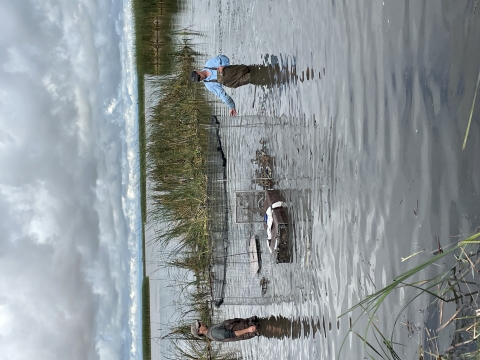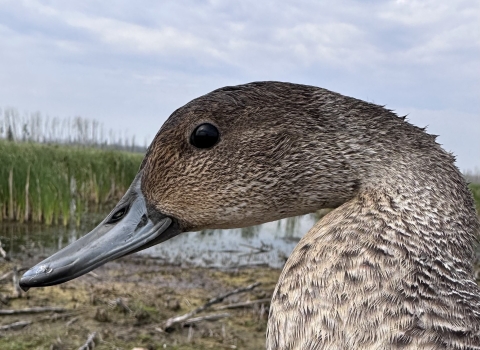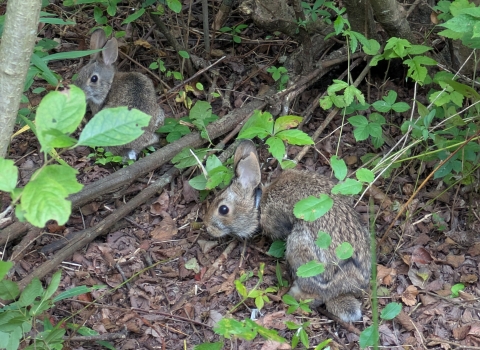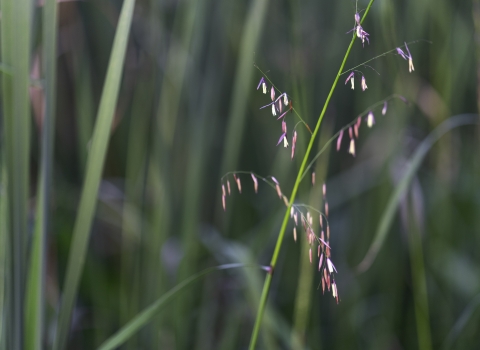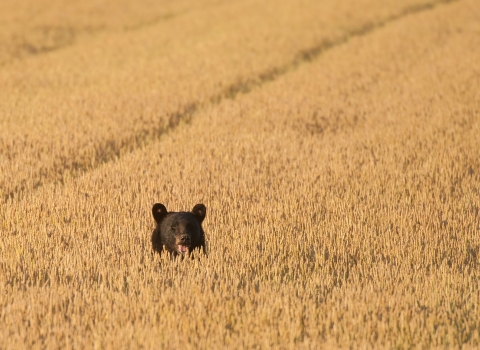When I first heard about my fellow U.S. Fish and Wildlife Service employees banding ducks across the border in Canada, I started asking questions about how I could participate in the Western Canada Cooperative Banding Program. Being an avid waterfowl hunter and conservationist; this opportunity was right up my alley. On the drive up from Wisconsin, I had no expectations for this trip and just enjoyed the ride to assist at the banding station in southern Manitoba, Canada.
Shortly after we arrived, we started by scouting the marsh to see what it had to offer. After launching the airboat, we took a quick trip down a drainage ditch and came upon an opening through the cattails that brought us to acres and acres of open water mixed in with emergent vegetation. At first glance there weren’t a ton of ducks, which made sense because a lot of them were still molting, so they were likely hiding in vegetation.
After finding some areas that were holding large concentrations of ducks, we started to lay out many buffet tables of barley around the marsh to start attracting the diversity of fowl the marsh had to offer. Over the course of the month, we caught mallards, black ducks, northern pintails, redheads, canvasbacks, wood ducks, blue-wing teals, green-wing teals, ring-necked ducks, and a bufflehead. In total, we setup 13 swim-in traps and caught over 2,500 ducks!
The banding crew was comprised of U.S. Fish and Wildlife Service Assistant Refuge Manager Jay Hitchcock, our crew leader, U.S. Fish and Wildlife Service Migratory Bird Biologist Stephen Chandler, and myself, a U.S. Fish and Wildlife Service Private Lands Biologist. Seeing that Jay and Stephen are both experienced banders, I was able to soak in the wealth of knowledge they provided. From new tactics on how to catch ducks to identifying the age and sex of each species of ducks we caught.
Being in the “duck factory” of the prairie potholes in southern Manitoba, Canada, for a month brought along its challenges and rewards. With the landscape being so flat, you can see storms building miles away, giving you notice your time being dry was limited. On the flip side, a beautiful partly sunny day with the temps in the 70’s-80’s, surrounded by a variety of wildlife – American bitterns, Sora rails, black terns, greater yellowlegs, marbled godwits, Franklin’s gulls, and coots – I couldn’t think of a better day at work. Not only was the marsh astonishing, but the accommodations of the Canadians made our work possible. In fact, without the help of the local Canadian community and knowledge, none of our efforts would have been achievable.
Disclaimer: All banding, marking, and sampling is being conducted under a federally authorized Bird Banding Permit issued by the U.S. Geological Survey’s Bird Banding Lab and the Bird Banding Office in Canada.

